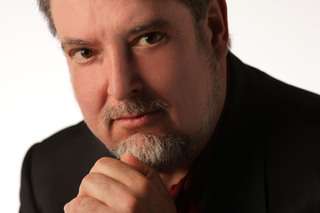|
Back
A Journey's Powerful Start Houston
Jones Hall
09/14/2012 - Sept 16
Johannes Brahms: Piano Concerto No. 1 in D Minor, Op. 15 – Symphony No. 1 in C Minor, Op. 68
Garrick Ohlsson (piano)
Houston Symphony, Hans Graf (conductor) 
G. Ohlsson (© Paul Body)
After its engagingly diverse and colorful season opener, the Houston Symphony delves headlong into a three-week survey of "The Best of Brahms." The title is curious (how can it be so named if there are now works for solo piano or chamber ensemble, let alone Lieder), but the series does traverse through the majority of Brahms' major orchestral works, including those with chorus. If the electricity running through the first evening is any indication, this will be a refreshing journey.
Garrick Ohlsson is always an impressive and communicative soloist. Like his Rachmaninov Third two seasons ago, he brought luxurious sound, intelligent phrasing and voicing and exciting interpretive nuance to Brahms' stormy First Concerto. Graf matched him throughout the piece. The first movement's second theme almost slowed to a halt, raising some suspicion that the remainder of the movement would be lackadaisical, but this feeling was banished as Graf and Ohlsson used this slowing to throw the tumultuous episodes that pepper the remainder of the movement into greater relief. The torrent of melodies that Brahms offers up rode proudly atop powerful, perfectly-balanced horn sounds and gutsy timpani growls. Ohlsson's manic, tight trills were matched perfectly by woodwinds and strings, and the pianist produced a gorgeous range of colors that was answered by the composer's ever-changing orchestral combinations.
The second and third movements were equally successful. In the Adagio, orchestra and soloist were perfect poets, offering thoughtful, sometimes risky expressive ebbs and flows that never sounded self-righteous. Ohlsson kicked the finale off at quite a clip, and the ensemble followed suit delightfully. The dense counterpoint was kept clear and culminated in a spritely, articulate fugato. The cadenzas were powerfully rendered and the horns again put their prowess on display to lead into the riveting coda.
The performance of the First Symphony after intermission was equally enjoyable. Graf was perhaps wise in omitting the exposition repeat in the first movement to keep the concert taut, and the performance was dominated by a feeling of forward motion. The second movement is hardly ever taken at a true "Andante," but this was to the audience's benefit tonight, as we got to savor the fine playing of the orchestra's newest principal, oboist Jonathan Fischer, who produced impeccable tone and intonation coupled with tasteful, distinctive phrasing of his several solos. This seemed to inspire the other woodwind soloists and, in the rare moments when Brahms' orchestration became chamber-like, there was a refreshing spectrum of perfectly placed primary colors on display. A slight bobble at the start of the third section of the third movement couldn't derail its charm, and the finale summed the evening up perfectly. Here was bold interpretation matched by flawless playing, with the broad horn and flute solos particularly impressive, but also a structural drive towards a thrilling, brassy peroration.
Marcus Karl Maroney
|